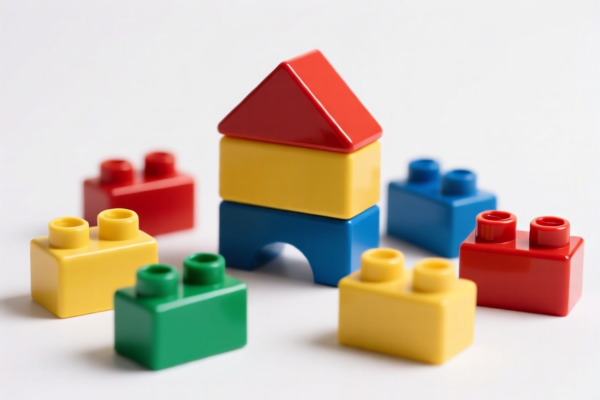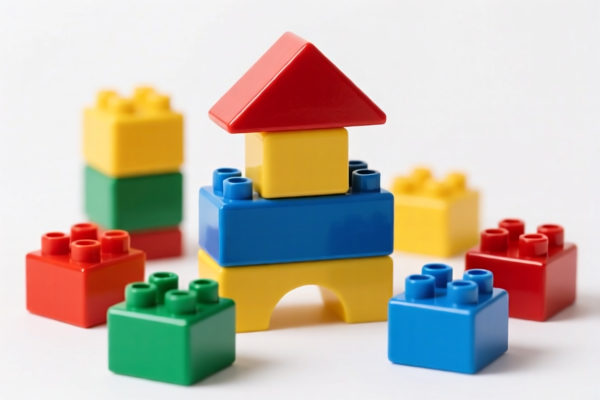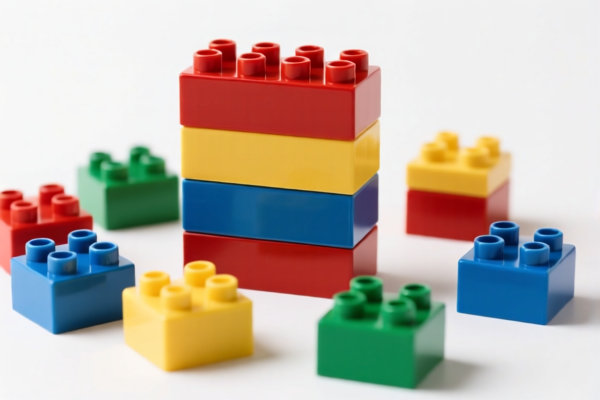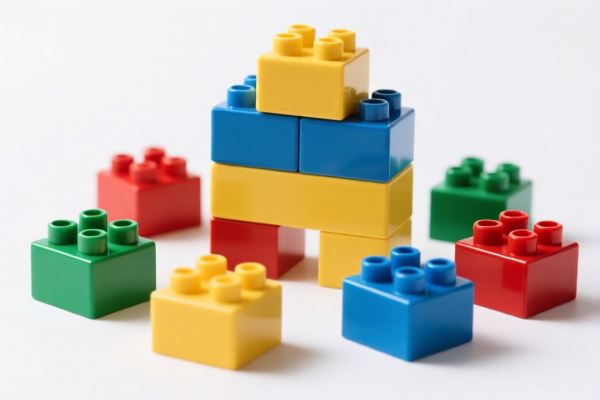| HS Code | Official Doc | Tariff Rate | Origin | Destination | Effective Date |
|---|---|---|---|---|---|
| 9503000071 | Doc | 30.0% | CN | US | 2025-05-12 |
| 9503000073 | Doc | 30.0% | CN | US | 2025-05-12 |
| 9504500000 | Doc | 30.0% | CN | US | 2025-05-12 |
| 9504904000 | Doc | 30.0% | CN | US | 2025-05-12 |
| 3926901000 | Doc | 40.9% | CN | US | 2025-05-12 |
| 3924104000 | Doc | 33.4% | CN | US | 2025-05-12 |
| 3924905650 | Doc | 40.9% | CN | US | 2025-05-12 |
| 6114909010 | Doc | 35.6% | CN | US | 2025-05-12 |
| 6114909070 | Doc | 35.6% | CN | US | 2025-05-12 |
| 6304996040 | Doc | 33.2% | CN | US | 2025-05-12 |
| 6304996030 | Doc | 33.2% | CN | US | 2025-05-12 |
| 6307907500 | Doc | 34.3% | CN | US | 2025-05-12 |
| 6307908910 | Doc | 37.0% | CN | US | 2025-05-12 |




Building Blocks
Building blocks are toys that allow children to assemble structures, typically through stacking, fitting, or interlocking. They are a cornerstone of early childhood development, fostering creativity, problem-solving skills, and spatial reasoning.
Material
- Wood: Traditional and durable, often finished with non-toxic paints or varnishes. Offer a classic aesthetic and tactile experience.
- Plastic: The most common material, offering a wide range of colors, shapes, and sizes. ABS plastic is frequently used due to its strength and safety. Bio-plastics are an increasingly available sustainable alternative.
- Cardboard: Lightweight and recyclable, suitable for younger children and temporary constructions.
- Foam: Soft and safe, ideal for very young children or those with sensory sensitivities.
- Magnetic: Utilize magnets for easy connection, often used in more complex construction sets.
Purpose & Function
- Cognitive Development: Building blocks encourage spatial reasoning, problem-solving, and mathematical thinking (counting, sorting, patterns).
- Creative Expression: Allow for open-ended play and the creation of unique structures and scenarios.
- Fine Motor Skills: Manipulating blocks develops hand-eye coordination and dexterity.
- Social Skills: Collaborative building promotes teamwork, communication, and negotiation.
- Imaginative Play: Structures can represent real-world objects, fantastical creations, or abstract designs.
Usage Scenarios
- Free Play: Unstructured building allows children to explore their own ideas and creativity.
- Guided Construction: Following instructions to build specific models.
- Storytelling: Using structures as props for imaginative narratives.
- Educational Activities: Learning shapes, colors, counting, and basic engineering principles.
- Group Projects: Collaborative building for larger-scale constructions.
Common Types
- Classic Wooden Blocks: Simple, rectangular blocks in various sizes.
- LEGO Bricks: Interlocking plastic bricks with a standardized system, allowing for complex and detailed constructions. Numerous themes and sets are available.
- Mega Bloks: Larger plastic bricks, designed for younger children.
- Duplo Bricks: Larger LEGO bricks, designed for younger children.
- Magnetic Tiles: Flat, geometric shapes with magnets embedded, allowing for easy connection and construction of 2D and 3D structures. (e.g., Magna-Tiles, PicassoTiles)
- Soft Blocks: Fabric-covered blocks filled with soft materials, suitable for babies and toddlers.
- Foam Blocks: Lightweight and colorful blocks, often used in early childhood education.
- Kapla Blocks: Identical wooden planks, encouraging open-ended construction and balance.
Educational toys, specifically building blocks, fall under several classifications based on the provided information. Here's a breakdown of relevant HS codes:
- 9503000071: This HS code covers Tricycles, scooters, pedal cars and similar wheeled toys; dollsʼ carriages; dolls, other toys; reduced-scale (“scaleˮ) models and similar recreational models, working or not; puzzles of all kinds; parts and accessories thereof. Specifically, it applies to “Childrenʼs productsˮ as defined in 15 U.S.C. § 2052: Other: Labeled or determined by importer as intended for use by persons: Under 3 years of age. If the building blocks are marketed for children under 3, this code is applicable. The total tax rate is 30.0%.
- 9503000073: This HS code also covers Tricycles, scooters, pedal cars and similar wheeled toys; dollsʼ carriages; dolls, other toys; reduced-scale (“scaleˮ) models and similar recreational models, working or not; puzzles of all kinds; parts and accessories thereof. However, it applies to “Childrenʼs productsˮ as defined in 15 U.S.C. § 2052: Other: Labeled or determined by importer as intended for use by persons: 3 to 12 years of age. If the building blocks are marketed for children between 3 and 12 years old, this code is applicable. The total tax rate is 30.0%.
Important Note: The classification between 9503000071 and 9503000073 depends entirely on the age range the building blocks are intended for, as indicated by the importer's labeling.
Customer Reviews
I found the information on HS code 3925 extremely useful. It’s rare to find such specific details on plastic doors and their tariff rates.
The details on the 5% tariff were helpful, and the HS code explanation made things much clearer for my export planning.
Perfect resource for understanding the tariff rates and HS code for plastic builder’s doors. Very well organized and easy to follow.
The page provided good trade details, but I wish there was a bit more info on the duty exemptions for certain states.
I was looking for HS code details for plastic doors, and this page had all the specifics I needed. Definitely saved me time.